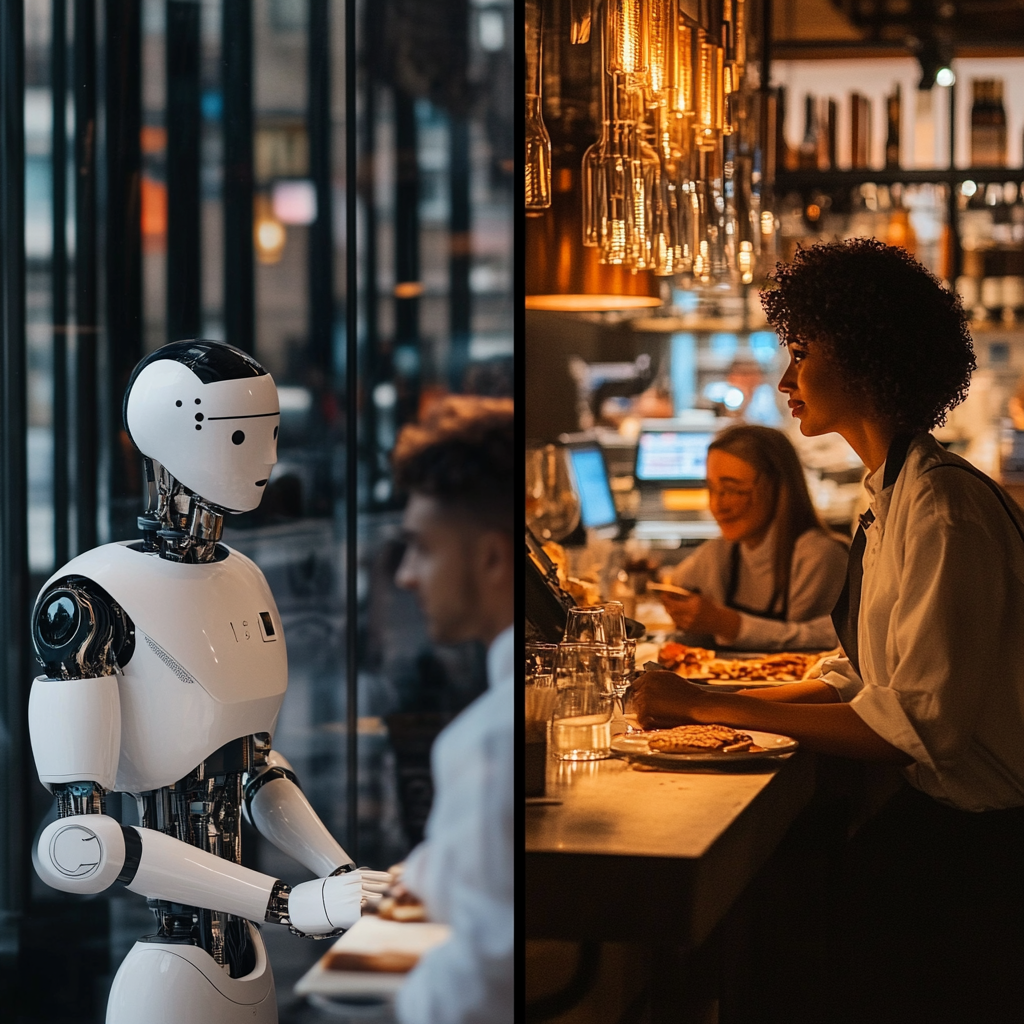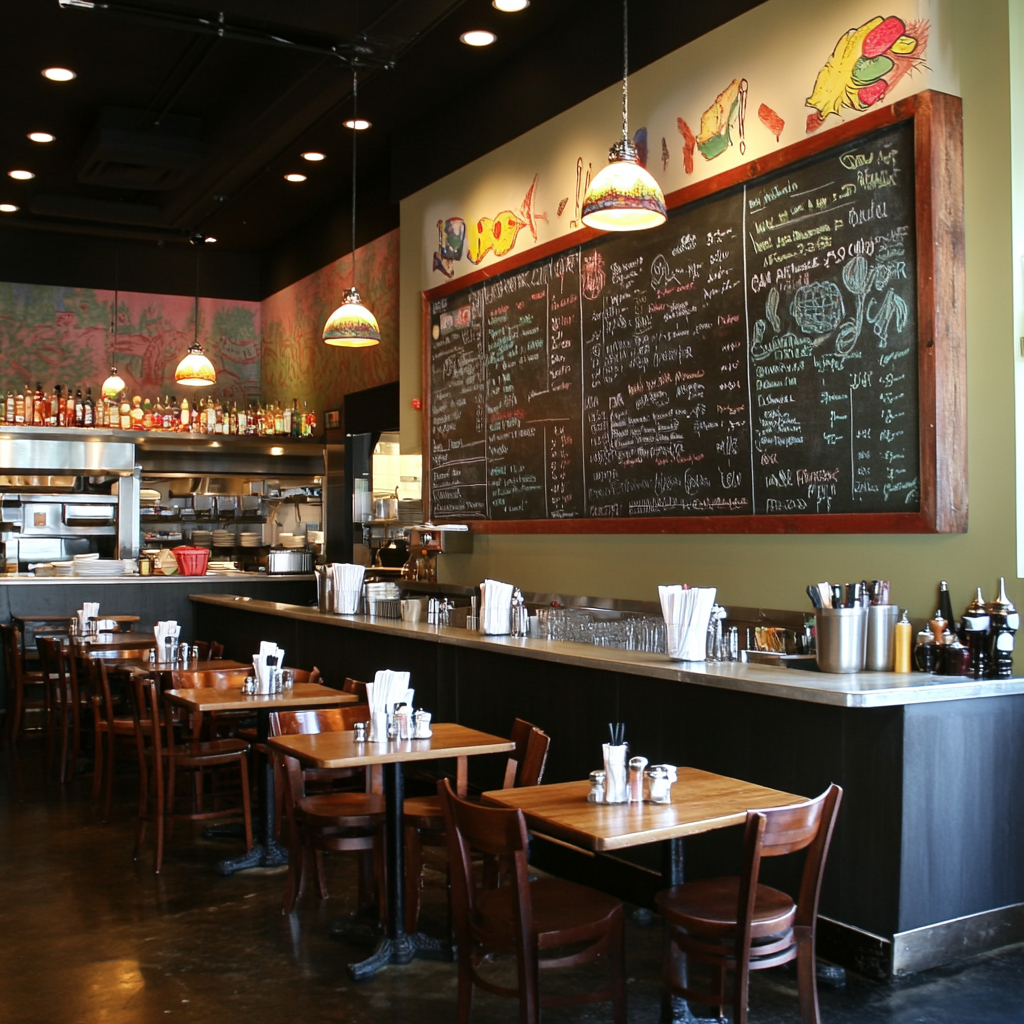In the ever-evolving restaurant industry, customer feedback has become a powerful force for change. As we navigate the post-pandemic landscape, restaurants are facing unprecedented challenges and opportunities. From technological innovations to pricing strategies, establishments are being forced to adapt – and quickly. But what happens when these changes clash with customer expectations? Let’s explore how customer backlash is reshaping the dining experience in 2024.
QR code menus fall out of favor with diners

Remember when scanning a QR code to view a menu felt cutting-edge and safe? Those days are fading fast. Restaurants are now ditching QR codes and reverting to traditional paper menus after significant customer pushback. Why? It turns out that what seemed like a tech-savvy solution during the pandemic has become a source of frustration for many diners.
Customers have voiced concerns about the clunkiness of navigating digital menus on smartphones, as well as data privacy issues. A survey revealed that a whopping 88% of diners preferred paper menus over QR codes at sit-down establishments in 2022. This preference spans generations, though younger patrons tend to be more accepting of digital options.
Interestingly, the shift back to paper isn’t just about customer comfort. Some restaurant owners have found that QR codes can limit menu browsing, potentially reducing revenue for staff. Rich Fox, operating owner of Seattle-based Yes Parade Restaurant Group, noted that digital menus often prevent patrons from seeing the full range of options, leading to less money for chefs and waitstaff.
Dynamic pricing strategies face consumer scrutiny
As restaurants grapple with rising costs and changing market conditions, many are turning to dynamic pricing – a strategy long used in industries like airlines and ride-sharing. But in the food service sector, this approach is meeting resistance. Dynamic pricing in restaurants involves adjusting menu prices in real-time based on factors such as demand, input costs, and even weather.
While the concept isn’t new, recent events have thrust it into the spotlight. In California, the increase in minimum wage for fast food workers led chains like Burger King, Chipotle, and Wendy’s to adjust their pricing strategies. Some increased prices by as much as 8%, sparking heated public discourse on fairness and acceptability.
The backlash against these price hikes has been more pronounced in the food service industry compared to others. Why? Food is personal, and customers are particularly sensitive to changes in their favorite meals. Restaurants implementing dynamic pricing must tread carefully, balancing business needs with consumer expectations.
Technology adoption clashes with desire for human touch

In the rush to modernize, some restaurants have gone all-in on technology, implementing AI-driven chatbots for customer inquiries and order-taking. While these innovations can streamline operations, they’re not always hitting the mark with customers. The 2024 State of the Restaurant Industry report reveals a crucial insight: given a choice between people and technology, consumers continue to crave human hospitality in their culinary experiences.
This preference for the human touch doesn’t mean technology is unwelcome. Rather, it suggests that restaurants need to find a balance. Automation and robotics are set to play a more significant role in the industry, but their implementation should enhance, not replace, the personal aspects of dining out.
What if restaurants used AI to predict customer preferences behind the scenes, while maintaining warm, human interactions at the front? This hybrid approach could offer the best of both worlds – improved efficiency without sacrificing the personal touch that diners value.
Food temperature issues top customer complaint list
When it comes to dining out, temperature matters – a lot. Nearly 70% of surveyed customers reported that incorrect food and beverage temperatures ruin their dining experience. This issue tops the list of common restaurant complaints, surpassing even concerns about service speed or menu pricing.
The prevalence of this complaint highlights a critical area for improvement in restaurant operations. It’s not just about cooking skills; it’s about timing, coordination, and sometimes even the layout of the kitchen and dining areas. Restaurants that can consistently nail the temperature of their dishes are likely to see a significant boost in customer satisfaction.
To address this, some establishments are investing in advanced kitchen equipment and staff training. Others are rethinking their service flow to ensure that hot dishes arrive piping hot and cold dishes maintain their chill. It’s a reminder that sometimes, the most impactful changes come from focusing on the basics.
Value perception becomes critical amid economic pressures

As economic uncertainties persist, customers are becoming increasingly value-conscious. The 2024 State of the Restaurant Industry report indicates that nearly half of consumers are taking a wait-and-see stance when it comes to spending. This cautious approach is forcing restaurants to rethink their value propositions.
Perceived poor value or overpricing is a major turn-off for diners. Restaurants are responding by getting creative with their offerings. Some are introducing prix fixe menus or early bird specials to attract budget-conscious customers. Others are focusing on highlighting the quality and uniqueness of their ingredients to justify their pricing.
The challenge lies in striking a balance between profitability and perceived value. With 97% of operators citing higher food costs as a significant issue, simply slashing prices isn’t a viable solution. Instead, successful restaurants are finding ways to communicate the value of their offerings more effectively, whether through storytelling about their ingredients or by offering unique dining experiences that justify the cost.
Crisis management becomes a critical skill for restaurants
In an age where a single viral video can make or break a restaurant’s reputation, crisis management has become an essential skill for restaurant owners. The history of restaurant crisis communications is filled with cautionary tales, from food safety scandals to social media gaffes.
Take the case of Golden Corral, where a video of raw meat stored near a dumpster went viral, causing significant damage to the company’s reputation. Or consider Domino’s quick and genuine response to a video of employees performing unsanitary acts with food, which helped the company recover from potential disaster.
These incidents underscore the importance of having a solid crisis management plan in place. Restaurants that respond quickly, transparently, and empathetically to customer concerns are more likely to weather the storm of public opinion. In 2024, this means not just addressing issues as they arise, but actively monitoring brand reputation across various platforms and being prepared to engage in meaningful dialogue with customers.
As we look to the future of dining, it’s clear that the restaurant industry is at a crossroads. The challenges are many, from adapting to new technologies to meeting evolving customer expectations in a tough economic climate. Yet, these challenges also present opportunities for innovation and growth. The restaurants that will thrive are those that listen closely to their customers, remain flexible in their approaches, and never lose sight of the fundamentals that make dining out special – good food, warm hospitality, and memorable experiences. In navigating these changes, the industry isn’t just adapting; it’s reimagining what it means to dine out in the modern world.


